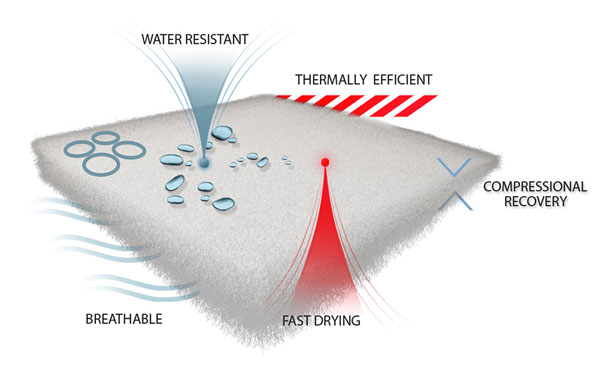Buyer's Guide
How to choose the best Sleeping Bag for Camping or backpacking
The Weekend Nomad's How to choose the best Sleeping Bag for Camping or backpacking
A sleeping bag is an essential item when going out on camping. It greatly determines how well you sleep at night while out camping and as such, you might want to be thorough when shopping for one by going through the information with a fine-tooth comb. So if it’s your first time getting a sleeping bag or you are looking to change your existing one, here are some tips to guide you in making your choice:
What are the temperatures to the places you are looking to camp in?
One feature found in sleeping bags is temperature rating. Basically, this is the lowest temperature that the sleeping bag is meant to keep you warm while in it. Theoretically, this means that if the temperature rating of a sleeping bag is 10 degrees Celsius, then the sleeping bag should keep you warm at that temperature. However, not much is known on how the manufacturers come about this rating.
So what are you to keep an eagle’s eye on when checking out the temperature rating of a sleeping bag? Basically, there are three levels of comfort rating as outlined by the EN 13537 ratings. This is the standard that sleeping bags are labeled on in Europe. So what are these levels of comfort?
Comfort
This is a perception of how a standard night’s sleep might be like for a ‘standard’ woman. This is because women require more insulation compared to men. So its basically the level of warmth women would require so as to have comfortable sleep.
Limit of Comfort
This signifies the lowest temperature a ‘standard’ man would require so as to have a comfortable night’s sleep.
Extreme
This is the lowest temperature that you can live in while in the sleeping bag in consideration without dying of cold.
Basically, in the case of a bag’s temperature rating, consider the coldest place you might camp out in and then make your decision based on this.
| Bag Type | Temperature Rating (°F) |
| Summer Season | +35° and higher |
| 3-Season | +10° to +35° |
| Winter | +10° and lower |
What makes up the sleeping bag’s filling?
There are two kinds of filling: synthetic and down filled. When a sleeping bag is synthetically filled, it is cheaper than a down filled bag. It is also weightier and bulky and is insulated when wet. However, it is not as long lasting.

Down filled bags on the other hand tend to be lighter and warmer than their synthetic counterparts. However, they are costlier and have no insulation properties in case of wetness. So between these two, which sleeping bag do you settle for? It all boils down to the money you are willing to spend and how you camp.
If you are considering camping in the long term, then down is a great option. On the other hand, if you will be camping out in wet conditions, then synthetics are definitely for you.
The shape of the sleeping bag
Sleeping bags don’t all come with the same shape but they vary. The main shapes include rectangle, tapered rectangle and mummy.
The rectangle bag as the name implies, is rectangular. As such, it allows for more room to wriggle. This is the ideal sleeping bag for someone who is not bogged down by size or weight.
A tapered bag tapers all the way to the foot, almost like the mummy bag. It allows for more room to wriggle and is generally a shaped bag for all.
A mummy bag is likely to be the most efficient. It has a lot of space at the shoulders but narrows down as you head to the feet. This means that it has less air that needs to be warmed. However, it has less wriggle room and so it’s not the right fit for people who toss and turn in their sleep.
What size do you prefer?
In addition to the shape of the sleeping bag, you have to be keen on the size. Bags come in different lengths so as to cater for short and tall people. Other bags are made along the lines of gender with female bags being narrow at the top but widen at the hips area. And since women are believed to be 'cold sleepers', some bags cater for this by having extra insulation.
Buying a sleeping mostly comes down to those factors though other factors such as whether it has a hood or a neck muff might come to play. However, it all boils down to your budget.

Kelty Cosmic Down 20°
- Temperature rating: 20ºF
- Total weight: 2.13 lbs
- Fill power: 600
- Filling: Fill Down

Big Agnes Hazel 15
- Temperature rating: 15ºF
- Total weight: 2.13 lbs
- Fill power: 650
- Filling: Down

Western Mountaineering MegaLite 30
- Temperature rating: 30 ºF
- Total weight: 1.5 lbs
- Fill power: 850
- Filling: Goose Down

Klymit KSB 0Degree
- Temperature rating: 0 ºF
- Total weight: 3.7 lbs
- Fill power: 650
- Filling: Duck Down
You might also like
Recommended Products

How to use a compass

How to read a topo map

Snake bites

Preparing tasty meals outdoors

What is a good tent waterproof rating?

How to set up your campsite

How to start a fire with wet wood

21 Tips for getting the best from your camping fridge

Expert camping hacks every camper should know

6 Different ways of camping – which is right for me?
The Weekend Nomad is a participant in the Amazon Services LLC Associates Program, an affiliate advertising program designed to provide a means for sites to earn advertising fees by advertising and linking to Amazon.com
All content Copyright © 2020 The Weekend Nomad & PixelProjects